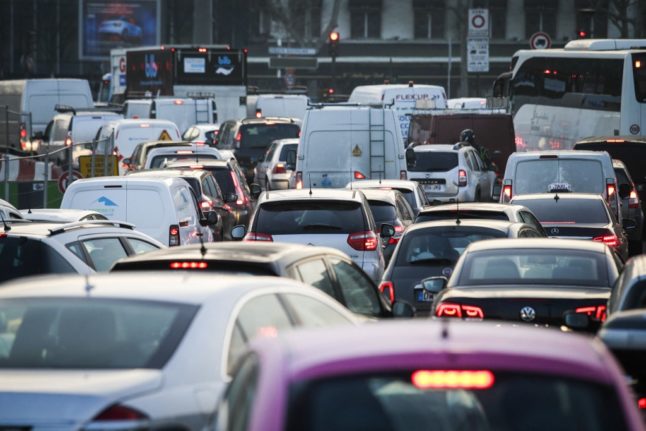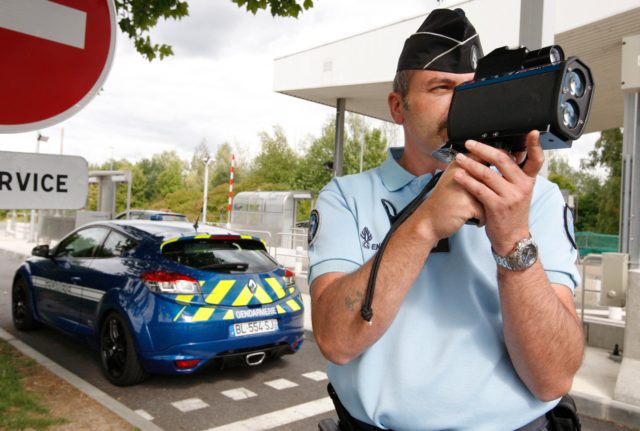Changes for bicycles
France already has quite strict laws in place for cyclists, including a ban on listening to music on headphones while cycling, but as the government attempts to boost cycling in France, some additional laws have come into effect.
New categories – Starting in October 2022, France will create two additional categories for bicycles: the vélomobile (bicyles with protective panelling) and the vélo couché (horizontal bicycles). As these bikes are lower to the ground and more difficult for motorists to detect, they will be banned on roads where speed limits exceed 50 km/h.
Fast bicycles – Bicycles whose electric assistance allows them to go up to 45km/h will have to ride on a D9 track on roads with a speed limit of 50 km/h or more. This type of track allows for a separate space for pedestrians and cyclists. These types of bicycles should not ride on D10 tracks (where the sidewalk is shared between cyclists and pedestrians) for safety reasons.
Reflectors – New rules will go into place at the start of October also allow bicycles to use orange or yellow reflectors, which were previously prohibited.
READ ALSO Everything you need to know about cycling in France
Changes for drivers
Signs
Signs banning the use of “cruise control” were repealed starting October 1st.
Additionally, starting in October, on the road in front of railroad crossings, a checkerboard marking area will be added to limit the possibility of accidents. This is intended to help vehicles be more aware of where they cannot enter, particularly if they are to be blocked in that space due to traffic.
QUIZ How well do you know your French driving laws?
Electric vehicles
Starting October 1st, electric vehicles parked in front of a public charging station must be connected and charging – drivers cannot simply use them as an extra parking space. Violators risk a fine of €58.
Driverless cars
Starting September 1st, a new set of laws went into place that allowed for the licensing of more types of autonomous vehicles on the road in France, albeit with some limits.
Specifically, the laws concern “Level 3” (on a scale of 1 to 5) ‘semi-autonomous vehicles.’ These vehicles can operate either with a driver or automatically. However, France is still a long way from allowing unmanned vehicles on the roads, and it is important to note that so far only one such semi-autonomous vehicle has been approved for use – the Mercedes S-Class. Several other manufacturers have also announced their plans to launch their own versions.
City vehicle limits
Several new cities have introduced either introduced or extended their current rules regarding low-emission zones, which ban the most polluting vehicles from certain areas, based on the Crit’Air sticker system.
As of September 1st, the cities of Marseilles, Lyon and Rouen introduced such changes.
All vehicles are required to display a Crit’Air sticker, which gives them a rating of 1-5 based on their emissions level.
In Marseille Crit’Air 5 vehicles will be banned from a zone in the city centre, while the law comes into effect on September 1st, police will only start issuing fines on October 1st.
In Lyon the low-emission zone which is already in place in the city and its surrounding suburbs will now include private vehicles – previously it only concerned commercial vehicles. It covers Crit’Air 3,4 and 5 vehicles, however fines will only start being given in January 2023, until then police will simply inform drivers of the new rules.
READ MORE: MAP: Which French cities have vehicle bans or restrictions?
Rouen too is expanding its low-emission zone – which covers 13 communes of the city and its suburbs – to include private vehicles with a Crit’Air 4 or 5 rating.
A similar scheme is already in place in Paris, covers vehicles with Crit’Air 3, 4 and 5 ratings, while several other cities have intermittent schemes that come into effect when pollution levels rise.
The sticker requirement covers both French and foreign-registered cars.
‘Contrôle techniques’ for motocycles and two-wheel vehicles
Technically, all motorised two-wheel vehicles were expected to need to submit to inspects as per a 2014 directive from the European Union.
In France this means the Contrôle technique – the regular vehicle inspection already required for cars (similar to the MOT in the UK). This would affect owners of motorised two-wheelers (scooters, motorcycles, mopeds) larger than 50 centimetres cubed. It would also impact owners of unlicensed cars, three-wheeled scooters, sidecars and quads.
If you have a vehicle dating from before 2016, according to the directive by the European Union, you should do your technical inspection prior to October 1st. For vehicles manufactured between 2016 and 2020, you have (in theory) until January 1, 2024. There is no set time frame for newer vehicles.
However, there has been much confusion surrounding this rule. President Emmanuel Macron’s government has attempted to pass legislation eliminating the obligation, but the legal status of the French government’s attempts are unclear, as they are still being judged by the European Commission. There will likely be more clarity on the subject, including further regulations regarding sound pollution, in the coming months, according to La Nouvelle Republique.
According to reporting by La Voix du Nord, owners of two-wheeled vehicles do not have to worry about being fined if they have not yet submitted to inspections.
Paris
Within the city of Paris, riders of motorbikes, mopeds and scooters now have to pay for parking.
The new rules come into effect on Thursday, September 1st and concern motorbikes, mopeds and scooters.
Anyone who parks a motorbike, moped or a scooter with an internal combustion engine in public parking spaces within the Paris area has to pay.
READ MORE: Paris brings in new parking fees for motorbikes and scooters
Low-emission two-wheelers, such as electric scooters, can still park for free – however you will still need to register with the scheme.



 Please whitelist us to continue reading.
Please whitelist us to continue reading.
Member comments